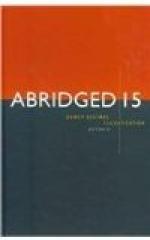Parts of sets, and books on the same or allied subjects, are never separated as they are sure to be, sooner or later, in every library arranged on the common plan, unless it be frequently re-arranged and re-catalogued. The great expense of this re-cataloguing makes it impracticable except for a few very wealthy libraries. In this system the catalogue and book numbers remain unchanged through all changes of shelving, buildings, or arrangement. In addition to its own peculiar merits, this plan has all the advantages of the card catalogue principle and of the relative location, which have been used and very strongly approved by prominent libraries.
As in the card catalogue system, there is room for indefinite expansion without devices or provisions. Space is the only requisite and if the shelf room is exhausted, the floor space is equally good, except for the inconvenience of stooping.
Some prominent opponents of classed catalogues have admitted that the Subject Index, in deciding where to class a book at first, and where to look for it ever afterwards, has removed their strongest objections. Certainly it would be impossible to make an Index more cheaply or more easy of reference, it being a single alphabet, of single words, followed by single numbers.
These class numbers applied to pamphlets have proved specially satisfactory. The number is written on the upper left corner and the pamphlets are arranged either in pamphlet cases with the books on the same subject or on special shelves divided every decimeter by perpendicular sections. As each pamphlet is examined when received into the library, it is the work of a single moment to pencil on it its class number. There is no expense whatever incurred, and yet the entire pamphlet resources of the library on any subject can be produced almost instantly. The immense advantages of this plan over those in common use, both in economy and usefulness, will be appreciated by every librarian caring for a pamphlet collection. A catalogue of authors may be made on slips if desired. The pamphlets themselves are the best Subject Catalogue.
Though designed wholly for library use, the plan has proved of great service in preserving newspaper clippings in large envelopes arranged by class numbers; and more especially in taking the place of the common note-book and Index Rerum. Slips of uniform size are used with the class number of the subject written on the corner. Minute alphabetical headings are used under each class number, the slips being arranged in numerical order like the Subject Card Catalogue. Clippings and notes arranged in this way are at all times their own complete index, and have the same advantages over the common scrap and note-books that the Subject Catalogue has over the Accessions Book, in looking up the resources of the library on any given subject. Those who have tried this method are so enthusiastic in its praise that it seemed worthy of mention in this place.




